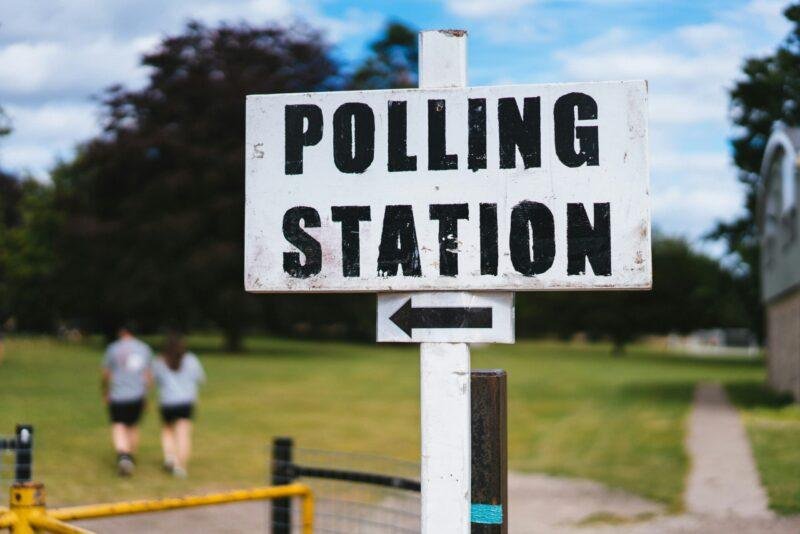Introduction to Government Growth
Government growth refers to the expansion of state functions, authority, and influence over time, characterized by an increase in bureaucratic agencies and regulatory frameworks. This phenomenon is significant as it encompasses various aspects of societal governance, reflecting changes in political, economic, and social environments. As societies evolve, so too do the roles and responsibilities of governments, leading to what is often termed state expansion. This process can be traced through various historical eras, each marked by significant developments in governance and public administration.
At the core of government growth is the historical adaptation of state functions to meet the demands of an increasingly complex society. In previous centuries, the government’s role was mainly limited to maintaining law and order and providing basic public services. However, with rapid industrialization, urbanization, and globalization, there emerged a pressing need for more sophisticated regulatory frameworks and comprehensive social services. Such changes gave rise to bureaucratic growth, where government institutions became more organized, capable, and specialized in managing various aspects of public life.
The emergence of the regulatory state, which emphasizes the government’s role in regulating economic and social activities, is a key feature of contemporary government growth. This shift reflects a recognition of the necessity for oversight to ensure public safety, equitable economic competition, and environmental sustainability. Consequently, the growing complexity of societies has prompted governments to expand their reach and enhance their regulatory capabilities.
In essence, understanding government growth involves a recognition of its historical context, where state expansion is not merely a modern necessity but part of a long-standing evolution in governance. This analysis will delve into the intricacies of bureaucratic growth and the challenges and opportunities presented by an expanding regulatory state, ultimately framing our understanding of contemporary government dynamics.
Historical Context of State Expansion
The trajectory of government growth can be traced back to ancient civilizations, where the rudimentary forms of governance were established primarily for maintaining order and delivering justice. Over centuries, however, the role of government has evolved, reflecting changes in societal needs and values. The emergence of more complex bureaucratic structures coincided with the rise of nation-states in Europe during the medieval period, characterized by increasing demands for organization and stability, which laid the groundwork for modern state systems.
Significant milestones throughout history mark this expansion, particularly the establishment of welfare states in the early to mid-20th century. Governments began to take on a more active role in the economic and social welfare of their citizens, resulting in the development of comprehensive social safety nets that provided healthcare, education, and financial assistance. This shift was influenced by pivotal global events, including the Great Depression, which highlighted the need for state intervention in economic affairs, leading to an increase in state functions and the expansion of bureaucratic capabilities.
Industrialization also played a crucial role in government growth. As economies shifted from agrarian to industrial, the complexities of urbanization necessitated more sophisticated regulatory frameworks. The proliferation of industries required states to implement regulatory measures to safeguard public health and labor rights, thereby reinforcing the authority and functions of government. Additionally, major global events such as world wars further altered the landscape of governmental operations. Following these conflicts, many countries experienced significant expansions in their state apparatus to address reconstruction, security, and social cohesion.
This historical overview reveals how the concept of the regulatory state emerged, characterized by extensive bureaucracy growth that governs various aspects of social and economic life. Each phase of state expansion reflects broader socio-political dynamics that necessitated a responsive and adaptive governmental approach, illustrating the transformative journey of government from simplistic structures to complex bureaucracies.
The Rise of Bureaucracy
The growth of bureaucracy represents a crucial dimension of government expansion, reflecting the complexities and demands of modern governance. As societies evolved from agrarian to industrial economies, the increased need for efficient administration ultimately led to a more structured bureaucratic system. This transition can be attributed to several factors, including the need for scalability in government functions and the necessity to manage diverse services across expanding populations.
In many countries, the emergence of a regulatory state was driven by the requirements of managing burgeoning economic activities and the provision of public goods. For instance, during the late 19th and early 20th centuries, the United States experienced significant growth in federal bureaucracy as the government took on various roles in regulating commerce, labor, and health standards. The establishment of agencies, such as the Interstate Commerce Commission and the Food and Drug Administration, represented a deliberate increase in bureaucratic structures to address the emerging complexities of industrial society.
Moreover, global conflicts and economic crises have historically accelerated the expansion of bureaucracy. Post-World War II, for example, many nations, including those in Europe, witnessed an increase in bureaucratic institutions aimed at rebuilding and managing the socio-economic landscape. This growth reflected not only an administrative necessity but also a shift in public expectations regarding the role of government in economic welfare, social justice, and public safety.
Furthermore, the advent of technology and the rise of digital governance have transformed bureaucratic structures, introducing new methodologies and increasing the efficiency of state operations. Governments globally are now adapting their bureaucracies to handle not merely traditional administrative functions but also the modern challenges of data management and citizen engagement.
Overall, the rise of bureaucracy illustrates the intricate link between state expansion and the evolving demands of governance within increasingly complex societies. As this trend continues, understanding the dynamics of bureaucratic growth remains essential for analyzing the trajectory of modern states.
The Regulatory State: Definition and Importance
The term ‘regulatory state’ refers to a form of government characterized by its extensive role in shaping and enforcing rules and regulations to oversee various sectors, safeguarding public welfare while facilitating economic growth. This concept has emerged significantly in the context of government growth, where the evolving complexity of societal challenges has necessitated a more structured and responsive bureaucratic framework. The regulatory state is increasingly viewed as a crucial component of modern governance, reflecting the balancing act between individual freedoms and collective responsibilities.
The emergence of the regulatory state can be traced back to the industrialization era, where rapid economic expansion outpaced existing laws and norms. As industrial activities expanded, so did the need for oversight to protect public safety, health, and the environment. Many governments began to recognize the imperative role of regulations in mitigating risks associated with economic activities. For instance, the establishment of regulatory agencies aimed at monitoring environmental impacts has become essential in many countries, such as the Environmental Protection Agency (EPA) in the United States.
The growth of the regulatory state is not uniform across nations; different countries implement various frameworks according to their unique challenges and societal values. In the European Union, for instance, member states collectively enforce regulations that encompass consumer protection, health standards, and environmental policies, reflecting a commitment to harmonized standards across borders. Other nations, like China, exemplify a regulatory environment focused heavily on economic regulation to stimulate growth while managing rapid urbanization and environmental degradation.
As society continues to evolve, the importance of the regulatory state remains paramount in addressing challenges related to public safety, environmental protection, and economic stability. This growth of bureaucracy illustrates the ongoing necessity for regulatory frameworks that adapt to emerging issues while ensuring accountability and transparency within the governmental structure.
Factors Driving Government Expansion
Throughout history, various factors have significantly contributed to the growth of government, culminating in what can be referred to as the phenomenon of state expansion. Understanding the forces behind this expansion requires an examination of economic, political, and social influences that necessitate a more robust bureaucratic system. In contemporary society, globalization serves as a major catalyst for increased governmental reach. As countries interconnect economically and politically, national governments are called upon to regulate international trade, ensure security, and manage cross-border issues such as immigration and environmental challenges. This intricate web of global relations places additional demands on government structures to function effectively, leading to notable bureaucracy growth.
Moreover, technological advancements necessitate a regulatory state that can adapt swiftly to changes. The rise of digital technology and the internet has created new industries that require oversight, from data privacy to cybersecurity. Government expansion in this domain is vital to protect citizens and maintain market integrity. Consequently, the bureaucracy must evolve to integrate these regulatory frameworks, ensuring minimal disruption while fostering innovation.
Social influences also play a critical role in the growth of government. Movements advocating for social justice and equality often prompt governments to expand their operations, addressing systemic inequalities and appointing new agencies focused on equity and inclusion. Economic crises serve as another impetus for expansion; during difficult financial times, governments frequently intervene to stabilize the economy, often leading to an overarching increase in both direct aid and regulatory measures. These interventions may manifest in the form of fiscal stimulus packages, social safety nets, and more stringent regulations on financial institutions, ultimately enhancing the government’s presence in citizens’ lives.
In conclusion, understanding the dynamics driving government growth over the years reveals a complex interplay of economic, political, and social forces that continuously shape the nature and extent of state expansion and bureaucracy growth.
Pros and Cons of Government Growth
The expansion of government, often referred to as state expansion, represents a significant evolution in the role of governmental institutions. This growth is typically driven by the increasing complexity of societal needs and the accompanying demands for services that only a robust bureaucracy can provide. One of the primary advantages attributed to government growth is the enhancement of social services. A larger government can mobilize resources more effectively to address public welfare, healthcare, education, and infrastructure. In times of crisis, such as natural disasters or pandemics, an expanded state is often better positioned to implement comprehensive response strategies, ensuring that citizens receive timely assistance.
Moreover, the regulatory state, a hallmark of modern governmental frameworks, serves to ensure compliance with laws that protect not only the environment but also the populace’s health and safety. By imposing regulations, governments can mitigate risks and enhance the overall quality of life for their citizens. Additionally, the broader scope of regulatory authority can help maintain economic stability by monitoring industries and preventing practices that could lead to market failures.
However, the growth of government also raises significant concerns. A primary disadvantage is the potential for increased bureaucracy, which can lead to inefficiency in service delivery. As governmental agencies expand, they may become entangled in red tape, impacting the speed and effectiveness of their response to the needs of citizens. Furthermore, as state power increases, there is a risk of overreach. Citizens may experience a gradual erosion of personal freedoms as government entities garner more control over daily life. This concern is particularly salient when bureaucratic expansions are accompanied by legislation that encroaches on individual rights.
In conclusion, while government growth can provide essential services and better crisis management, it is crucial to navigate the potential pitfalls of increased bureaucracy, loss of personal freedoms, and the risk of government overreach carefully.
Case Studies of Government Growth in Different Countries
The phenomenon of government growth has manifested distinctly across various countries, influenced by unique historical, cultural, and political contexts. This section examines several case studies, offering insights into the underlying factors that have shaped bureaucratic structures and regulatory practices globally. One notable example is the expansion of the state in Scandinavia, particularly in Sweden. The Swedish government implemented a comprehensive welfare state in the mid-20th century, characterized by extensive social safety nets and services. This growth can be attributed to a strong consensus on collective responsibility, which facilitated the establishment of a robust regulatory state that continues to function effectively today.
Conversely, the United States presents a different narrative of government expansion. The post-World War II era saw a significant increase in federal bureaucracy, influenced by economic growth and societal changes. The New Deal policies of the 1930s laid the groundwork for state intervention in economic affairs, and subsequent conflicts, such as the Vietnam War, further accelerated the expansion of government roles across various sectors. As a result, regulatory agencies proliferated, demonstrating a distinct approach influenced by American individualism and the market-oriented philosophy underlying government functions.
Meanwhile, in developing nations, such as India, government growth has often been driven by the needs of a diverse population and the necessity for infrastructure development. Following independence in 1947, India’s government expanded substantially to address social and economic disparities. This evolution saw a unique blend of central planning and local governance, contributing to a sprawling bureaucracy that attempts to balance regulatory demands with economic development.
The case studies presented reveal common patterns in government growth, such as the centrality of historical context and the influence of cultural values. However, the variations in approaches underscore the complexity of state expansion, illustrating different trajectories taken by countries in their quest to create efficient bureaucratic and regulatory systems.
Future Trends in Government Expansion
The future of government growth appears to be influenced by a variety of societal challenges and advancements that necessitate an adaptation of the state apparatus. Prominent issues such as climate change, digital transformation, and health emergencies have emerged as critical catalysts for state expansion and the growth of bureaucracies. As nations grapple with the escalating impacts of climate change, it is likely that governments will expand their roles in areas such as environmental regulation, energy management, and disaster response. This trend will result in an increasingly complex regulatory state, highlighting the need for cohesive policies that can address these global challenges effectively.
Furthermore, the digital transformation presents a dual challenge and opportunity for government growth. On one hand, the rapid evolution of technology necessitates a robust regulatory framework to manage issues such as data privacy, cybersecurity, and artificial intelligence. As governments strive to keep pace with technological advancements, the growth of bureaucracy will be paramount to ensure that regulations are updated and relevant. On the other hand, leveraging technology can also streamline government operations, thereby changing the nature of bureaucratic involvement. However, the need for oversight and regulation in this domain suggests an ongoing evolution of the state’s role in society.
Health emergencies, such as those exemplified by the global pandemic, have further illustrated the necessity for government intervention and expansion. Nations worldwide have witnessed a surge in bureaucratic responses to manage public health crises, emphasizing the importance of having an agile and responsive bureaucracy. In this context, the government’s ability to coordinate health policies, support recovery initiatives, and implement regulatory measures concerning public health can signal a significant growth trajectory for state functions in the coming years.
Given these influencing factors, it is clear that government expansion will continue to evolve in response to contemporary challenges. The confluence of climate pressures, digital advancements, and health imperatives will shape the future of state functions as nations seek to balance responsive governance with regulated growth.
Conclusion: The Ongoing Evolution of Government
The analysis of government growth reveals a complex history characterized by significant trends in state expansion, which are often intertwined with the growth of bureaucracy and the development of a regulatory state. Throughout various historical periods, it has been evident that government has evolved in response to social, economic, and political demands. This evolution underscores the necessity for a structured understanding of how and why government expands over time.
Several key points emerged from the discussion of government expansion. First, the relationship between societal needs and the accompanying growth of government structures cannot be understated. As populations grow and societies become more intricate, there is often a corresponding need for greater governmental oversight and administration. This phenomenon is further complicated by advancements in technology and globalization, which necessitate modern regulatory frameworks to address new challenges. Thus, the expansion of government and its functions is not merely a trend but a continuous response to changing conditions.
Moreover, the rise of a regulatory state illustrates how governments have sought to mitigate market failures and ensure public welfare through a more extensive regulatory framework. This growth in bureaucracy serves to implement these regulations effectively, thus accentuating the multifaceted nature of government expansion. The ongoing dialogue regarding the size and role of government reflects varying perspectives on the balance between individual freedoms and state intervention, highlighting how historical trends continue to influence contemporary policy debates.
In conclusion, understanding the historical nuances of government growth fosters a more informed dialogue about its future trajectory. Recognizing that state expansion is an evolving process prompts society to critically engage with the mechanisms of governance and consider how these developments will shape policy decisions moving forward.




